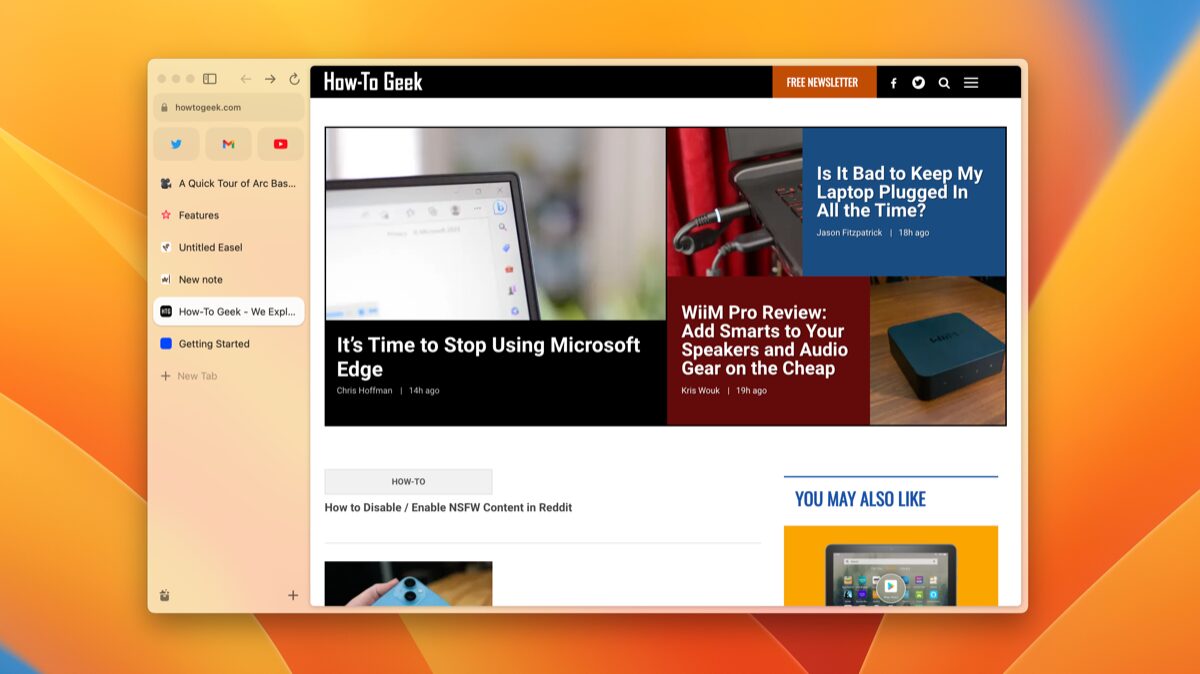Android Permissions Explained: Which Ones You Shouldn’t Ignore
Android
Quick Links
-
What Are Android Permissions?
-
What Permissions Are Available On Android Devices?
-
How To Turn Off Permissions For Apps
-
Why Manage App Permissions?
Android permissions are at the core of managing how apps interact with your device, safeguarding your data and personal information. Understanding these permissions ensures your privacy and helps you prevent apps from overstepping their boundaries.
What Are Android Permissions?
Android permissions give apps access to specific features or data on your phone. For example, a navigation app like Google Maps or Waze will ask for location access. A photo-editing app might also ask for access to our media storage. These permissions are created to provide transparency about what data apps can access so you can make informed decisions.
Android permissions usually come in the form of prompts like the one shown below.
What Permissions Are Available On Android Devices?
Permissions on Android are grouped into categories based on their function. Let’s break them down:
Body Sensors
These sensors access sensitive health data about your body, such as your heart rate, oxygen, and steps. Fitness and health apps like Google Fit and Samsung Health use these permissions to monitor your health and give tips on how to stay fit. Only allow this permission if you trust the app requesting it.
Calendar
Calendar permissions let apps read, create, and modify events on your calendar. While useful for scheduling apps, granting this permission to unknown apps could expose your sensitive personal information.
Call Logs
Apps with this permission can see and change call history. This is typically needed for dialer apps, but limiting access is wise due to privacy concerns.
Camera
This permission gives access to your phone’s cameras. Photography apps, QR code scanners, or social media apps with video call features will also need to use these permissions. However, rogue apps could misuse this permission for unauthorized recordings.
Contacts
Accessing your contacts allows apps to read, edit, or sync your phone book. Be wary of granting this to apps that don’t need it, as it can be exploited for spam or phishing.
Files
This permission enables apps to access or modify files stored on your device. While file managers or cloud services need this, it’s crucial to vet apps requesting this access to avoid exposing your personal documents.
Health Connect
This permission links apps to Google’s Health Connect, enabling data sharing between fitness apps. Only grant access to apps you trust with sensitive health information.
Location
Apps may request precise or approximate location access. Navigation, ride-sharing, and weather apps rely on this, but unnecessary access could compromise your privacy.
Microphone
Apps that need voice input and interaction, such as voice assistants or recording apps, need microphone access to function. However, malware can misuse this to eavesdrop on you.
Nearby Devices
This is used to connect to Bluetooth or other nearby devices. To prevent unwanted pairing or data sharing, be cautious when granting this to apps that don’t require it.
Notifications
This permission allows apps to send push notifications. While helpful for reminders or alerts, some apps might abuse this to send spam.
Phone
Phone permissions enable apps to make or manage calls and even know your phone number. Unless the app’s function is directly tied to calls, do not grant this permission. Fishy apps can use the permission to make unauthorized calls.
Photos and Videos
Apps use this to access or edit your media library. Be selective to prevent apps from collecting or misusing your personal photos.
SMS
This permission allows apps to read, send, or delete text messages. While useful for messaging apps or OTP auto-fill, misuse can lead to security breaches.
How To Turn Off Permissions For Apps
App permissions control what information and features apps on your Android device can access. If you have any permissions allowed for apps that you are not comfortable with, you can turn them off by following the steps below.
Changing Permissions for Specific Apps
Start by opening the Settings app on your Android device. Scroll down and tap “Apps”. Find the app with the permissions you want to change. If it’s not immediately visible, tap “See all apps” and look for the app.
On the page that opens, tap “Permissions” to view the app’s current permissions. Tap a specific permission (e.g., location, camera, contacts) and choose the desired option. The options available are:
- Allow: Grants the app access to the permission.
- Don’t allow: Denies the app access, even when in use.
- Ask every time: The app will prompt you to grant or deny the permission each time it’s needed.
- Allow only while using the app: The app can access the permission only when it’s active on your screen.
- All the time: This is for location only. The app can access your location even when it’s not in use.

Changing Permissions Based on Type
Instead of managing permissions app by app, you can view all apps that have access to a specific permission.
First, open “Settings. ”Then, navigate to the “Security and Privacy” tab. Under “Privacy,” tap on “Permissions Manager.”
On the page that opens, you will see a list of permissions with the number of apps they have access to.
Tap on any of the permissions to see the apps under them. You can then tap an app to modify its access rights.

Why Manage App Permissions?
Keeping an eye on your app permissions is important for safeguarding your privacy and security. Unnecessary permissions can lead to personal data being collected without your consent.
Reducing permissions also has practical benefits, such as improving battery life and enhancing device performance. By customizing your app permissions, you maintain control over your data while enabling apps to offer the features you value.
By customizing app permissions, you stay in control of your data while allowing apps to provide the features you value. Regularly reviewing and adjusting permissions is a good habit for maintaining both security and efficiency on your Android device.

















